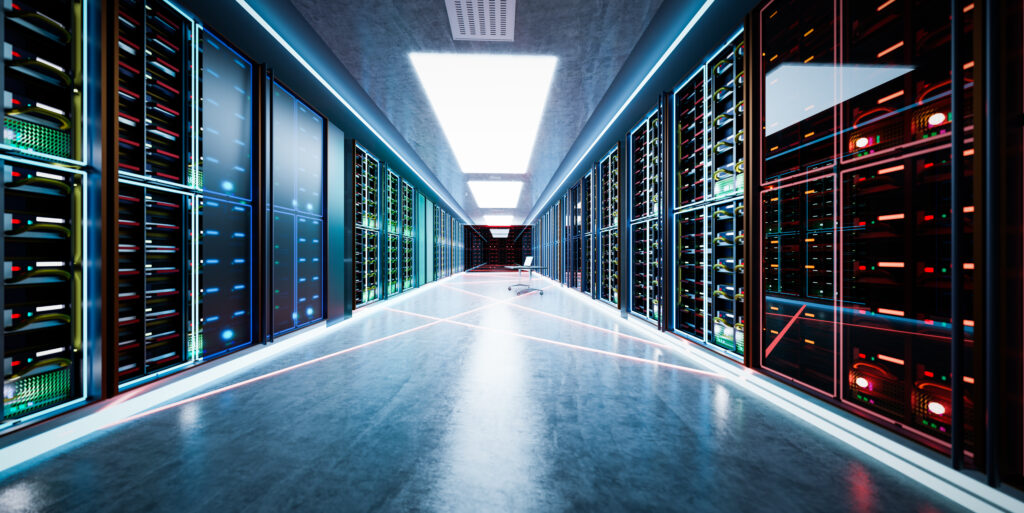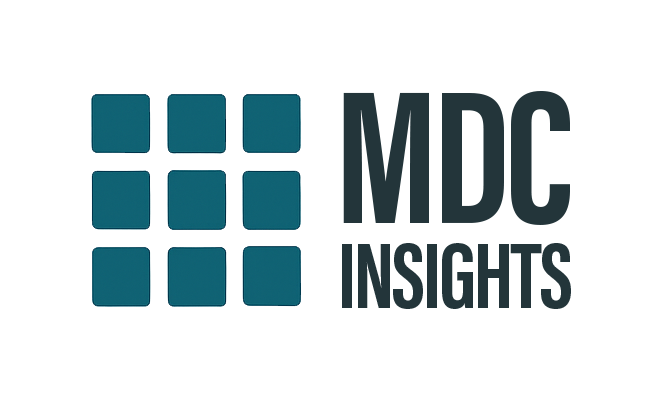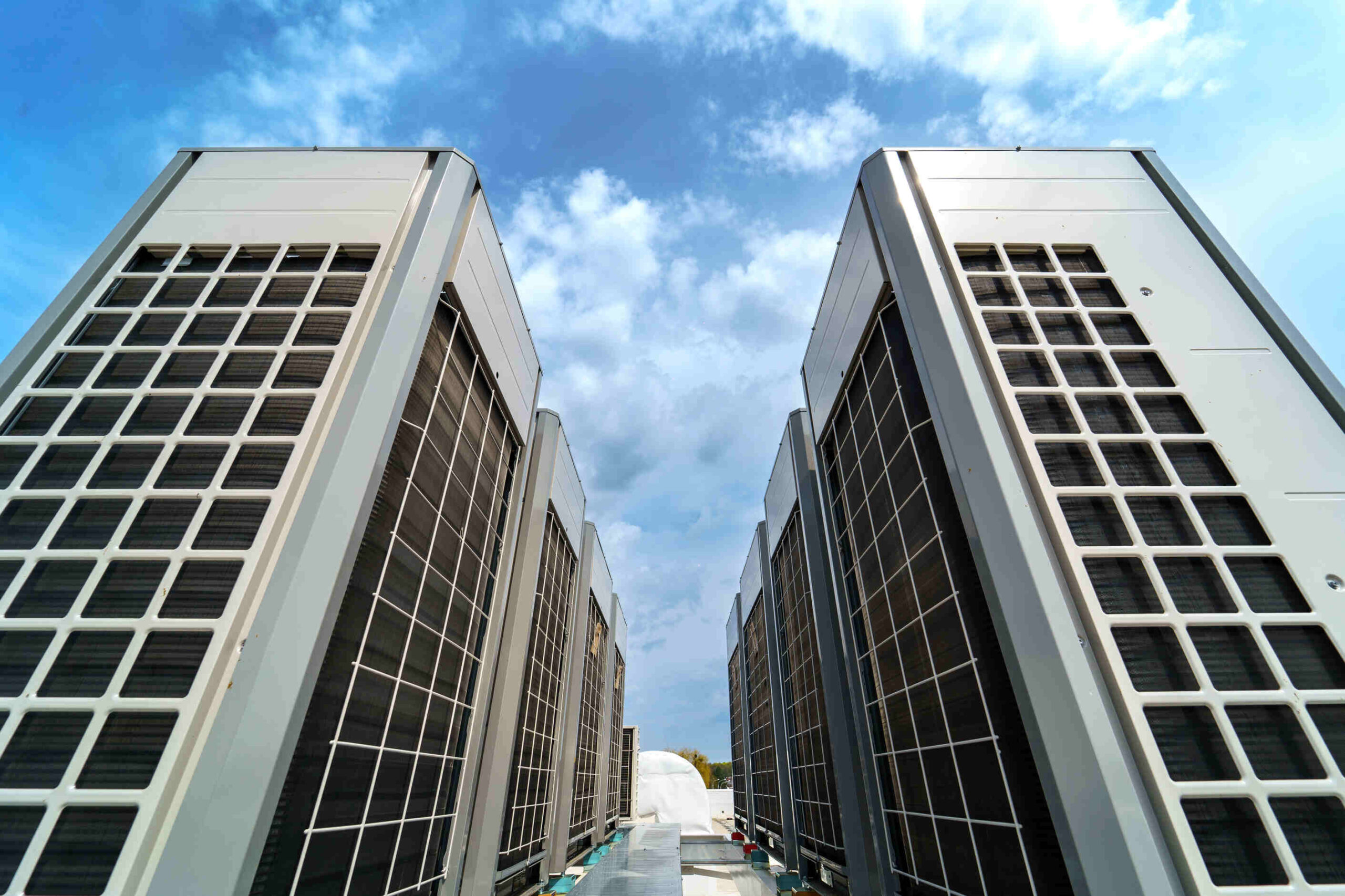In the United States, a profound shift is underway — one that could quietly redefine the architecture of economic productivity. For decades, office towers have stood as the symbols of prosperity and growth. But according to new construction data, spending on data centers is about to surpass spending on offices for the very first time [1][2][4].
In 2021, the contrast was striking. Over $65 billion was poured into building new offices, while less than $10 billion was allocated to data centers. Since then, office construction has collapsed, while data center spending has more than quadrupled. The lines are converging this year. And when they cross, it will signal more than a change in construction priorities — it will mark a shift in how and where future productivity is created.

From Labour to Silicon: A New Factor of Production
For centuries, economists have spoken of three fundamental factors of production: land, labour, and capital. Offices were built to concentrate and organise labour — to bring humans together, marshal their energy, and extract productivity from their combined presence.
But the 21st century is challenging this model. As AI, automation, and digitalisation accelerate, computation itself is emerging as a new factor of production [5][6]. The measure of output is no longer how many people can fit into a tower, but how much silicon can be stacked into racks inside a windowless warehouse.
In this paradigm, productivity is increasingly extracted not from people but from processors. The economy’s future growth may depend less on the number of human workers in a city and more on the compute capacity available in a region.
How Offices Shaped Society
To appreciate the magnitude of this transition, consider the role that office buildings have played in shaping society. They were not just workplaces. They reshaped the physical, cultural, and economic fabric of entire cities.
Skyscrapers drove the development of downtown business districts. Subways and bus networks were designed to funnel workers into these concentrated hubs. Coffee shops, restaurants, and bars flourished around them, forming the beating heart of urban life. Even workplace fashion — the suits, ties, and heels — evolved as a cultural response to the office environment.
In short, offices didn’t just house labour. They structured our days, our commutes, and our culture.
What Data Centers Will Shape
By contrast, data centers are largely invisible in daily life. Few of us ever step inside one. They do not drive bustling downtowns or cultural trends. Yet their impact may prove more far-reaching.
Data centers already account for 2–3% of global electricity consumption, and in the United States alone, they are projected to use over 10% of the grid’s capacity by 2030 [7][8]. They also consume vast amounts of water for cooling, raising questions about sustainability in water-stressed regions [13].
Unlike offices, which drew people into urban cores, data centers are reshaping rural landscapes. They require cheap land, reliable power, and access to water — often locating in areas historically bypassed by office-driven development [11]. For some rural economies, they bring new tax bases, construction jobs, and highly skilled roles. For others, they spark land disputes, infrastructure strains, and environmental pushback.
Infrastructure, Policy, and Power
The rise of data centers is also shifting the infrastructure priorities of nations.
- Grids and Energy Policy: Data centers are dictating where power grids are reinforced and where renewable energy investment flows [10]. The demand for stable, low-carbon electricity is accelerating transitions that governments once struggled to prioritise.
- Cooling Innovation: From liquid immersion to advanced air systems, data centers are driving new cooling technologies [8].
- Local Economies: While offices generated dense service economies — cafes, dry cleaners, retail shops — data centers generate fewer but higher-paying jobs in construction, engineering, and maintenance [11][12]. The economic footprint is distributed differently, and more unevenly.
This is creating both opportunities and challenges for policymakers. Regions with the right mix of land, power, and regulation can attract data center clusters. But these come with heavy trade-offs in resource use and environmental impact.
The Geopolitical Dimension
Beyond economics, data centers are fast becoming a matter of geopolitics. Just as oil pipelines and shipping lanes once defined spheres of power, control of digital infrastructure now plays a central role in global competition [9].
- Nations are increasingly focused on cloud sovereignty and ensuring that critical data infrastructure is located within their borders.
- The race for AI dominance is closely tied to compute capacity — which in turn depends on who controls the largest, most advanced data centers [5][9].
- Environmental and security risks add another layer. From undersea cables to power-hungry clusters, the invisible architecture of the internet is now both an asset and a vulnerability.
This intertwining of digital infrastructure with national strategy suggests that data centers may become flashpoints in future geopolitical tensions — the “oil fields” of the AI age.
The Invisible Architecture of the 21st Century
In the 20th century, office towers defined our skylines, our workdays, and even our identities. They were the physical embodiment of productivity.
In the 21st century, the most important buildings may not be skyscrapers at all. They may be the windowless, unglamorous boxes at the edge of town — humming with servers, invisible to most, yet essential to everything from AI to banking to national security.
We may one day look back and realise that the architecture that shaped our century wasn’t the tower we worked in, but the data center we never saw.
FAQs
1. Why are data centers growing so quickly compared to offices?
Because AI, cloud adoption, and digital services demand massive compute power, while hybrid work and remote culture have reduced the appetite for new office builds [5][7].
2. Do offices still matter?
Yes — but their symbolic role as the dominant form of economic infrastructure is fading. Offices remain important for collaboration and culture, but they no longer define the future of productivity [2][4].
3. What should policymakers focus on?
Balancing the growth of data centers with sustainability, energy security, and equitable local benefits. The challenge is to harness their economic potential without straining grids, water supplies, or communities [8][10][13].
If the skyscraper was the defining architecture of the 20th century, the data center may be the defining architecture of the 21st. Not because we see it every day but because almost everything we do will depend on it.
References
Investors Observer — Two Biggest Real Estate Trends in One Graph: Data Center Spending Set to Overtake Office Space for the First Time
🔗 https://investorsobserver.com/news/two-biggest-real-estate-trends-in-one-graph-data-center-spending-set-to-overtake-office-space-for-the-first-time/
Voronoi — Data Center vs. Office Center Construction
🔗 https://www.voronoiapp.com/economy/Data-Center-vs-Office-Center-Construction-6339
James Eagle (LinkedIn post with chart)
🔗 https://www.linkedin.com/posts/jameseagle_the-us-spends-almost-as-much-building-data-activity-7364514199240110080-cUBJ
Sage Economics — Office and Data Center Construction
🔗 https://www.sageecon.com/p/office-and-data-center-construction
McKinsey — AI Power: Expanding Data Center Capacity to Meet Growing Demand
🔗 https://www.mckinsey.com/industries/technology-media-and-telecommunications/our-insights/ai-power-expanding-data-center-capacity-to-meet-growing-demand
SSRN — Data as a New Productivity Factor
🔗 https://papers.ssrn.com/sol3/papers.cfm?abstract_id=4862685
Rothschild & Co — Data Centres: The Powerhouse Fueling the Digital Age
🔗 https://www.rothschildandco.com/en/newsroom/insights/2024/09/data-centres-the-powerhouse-fueling-the-digital-age/
McKinsey — Data Centers: The Race to Power AI
🔗 https://www.mckinsey.com/industries/technology-media-and-telecommunications/our-insights/data-centers-the-race-to-power-ai
Hinrich Foundation — Data Centers and Undersea Cables Tangle in Geopolitics and Climate
🔗 https://www.hinrichfoundation.com/research/wp/tech/data-centers-and-undersea-cables-tangle-in-geopolitics-and-climate/
Wolf Street — Construction Spending on Data Centers, Office Buildings, and Electric Power Installations
🔗 https://wolfstreet.com/2025/08/04/construction-spending-on-data-centers-office-buildings-and-electric-power-installations/
Public First — Data Centre Access and Local Economic Growth
🔗 https://www.publicfirst.co.uk/data-centre-access-and-local-economic-growth.html
James Madison Institute — Digital Foundations: The Essential Guide to Data Centers and Their Growth
🔗 https://jamesmadison.org/digital-foundations-the-essential-guide-to-data-centers-and-their-growth/

